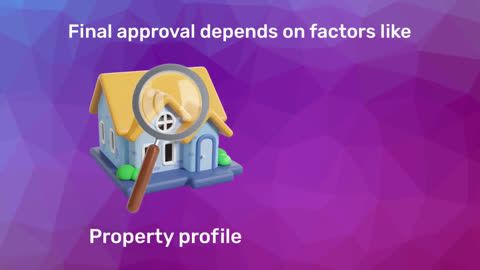1. Claim deduction on home loan interest under Section 24(b)
One of the primary benefits of taking a home loan is the tax deduction on the interest paid. Under Section 24(b) of the Income Tax Act, you can claim a deduction of up to Rs. 2 lakh per year on the interest paid on your home loan for a self-occupied property. This benefit applies to both the old and new tax regimes.- For the new tax regime: The standard deduction for home loan interest is available. Even though the new regime offers lower tax rates, you can still benefit from this deduction, providing a significant reduction in your taxable income.
- For the old tax regime: The deduction under Section 24(b) continues to apply, allowing you to reduce your taxable income by up to Rs. 2 lakh. This can lead to substantial savings, especially if you have a high-interest loan.
2. Utilise the principal repayment deduction under Section 80C
Another advantage of home loans is the deduction available on the principal repayment under Section 80C. You can claim a deduction of up to Rs. 1.5 lakh on the principal repayment of your home loan.- For the new tax regime: While the new tax regime does not offer the same set of deductions as the old regime, you can still claim the principal repayment deduction if you opt for the old regime for that financial year.
- For the old tax regime: This deduction is available under Section 80C, which includes other investments like Public Provident Fund (PPF), National Pension Scheme (NPS), and Equity-Linked Savings Scheme (ELSS).
3. Benefit from additional deduction on home loan interest for first-time homebuyers
Under Section 80EE, first-time homebuyers can claim an additional deduction of up to Rs. 50,000 on home loan interest. This benefit is available in both the new and old tax regimes.- For the new tax regime: If you qualify as a first-time homebuyer, you can claim this additional deduction even if you have opted for the new tax regime, ensuring that your tax burden is further reduced.
- For the old tax regime: This additional deduction complements other deductions available under the old regime, providing extra relief on your home loan interest payments.
4. Leverage the tax benefits on home loan for rented property
If you have rented out your property, the interest paid on your home loan can be fully claimed as a deduction under Section 24(b). There is no upper limit on this deduction for rented properties, unlike self-occupied properties.- For the new tax regime: The benefit is still available under the new regime, allowing you to claim deductions on the entire interest amount paid, which can be particularly useful if your rental income is significant.
- For the old tax regime: You can also claim this benefit under the old tax regime, providing a significant reduction in your taxable income if you have substantial rental income.
5. Claim deductions for pre-construction interest
Interest paid on a home loan during the construction period is eligible for a deduction under Section 24(b) once the construction is completed. This deduction is spread over five years, with a maximum limit of Rs. 2 lakh per year.- For the new tax regime: This benefit is available if you opt for the old tax regime. You can claim deductions for pre-construction interest under Section 24(b) in the year when the property is completed and ready for occupancy.
- For the old tax regime: This deduction allows you to recover the interest paid during the construction phase, thereby reducing your taxable income.
6. Take advantage of tax benefits on home loan for joint ownership
If you and your spouse co-own the property and are both co-borrowers, each of you can claim deductions on home loan interest and principal repayments individually.- For the new tax regime: Each co-borrower can claim up to Rs. 2 lakh for interest and Rs. 1.5 lakh for principal repayment under Section 80C. This allows you to double the deductions available on a single loan.
- For the old tax regime: The same benefits apply, providing substantial tax relief by maximizing the deductions available to each co-borrower.
Conclusion
Navigating the tax implications of a home loan requires strategic planning, especially with the introduction of the new tax regime. By leveraging the various deductions available under both the old and new tax regimes, you can optimize your tax savings and make your home loan more affordable.To maximize these benefits, consider consulting with a financial advisor or tax consultant to tailor your tax-saving strategies to your specific situation. Additionally, Bajaj Housing Finance offers home loans that can be seamlessly integrated with these tax benefits. With competitive home loan interest rates and flexible terms, Bajaj Housing Finance can help you achieve your homeownership goals while optimising your tax savings.
Explore your home loan options with Bajaj Housing Finance today and make the most of the tax benefits available under both the old and new tax regimes. Take control of your financial future and enjoy the advantages of smart home loan planning.




